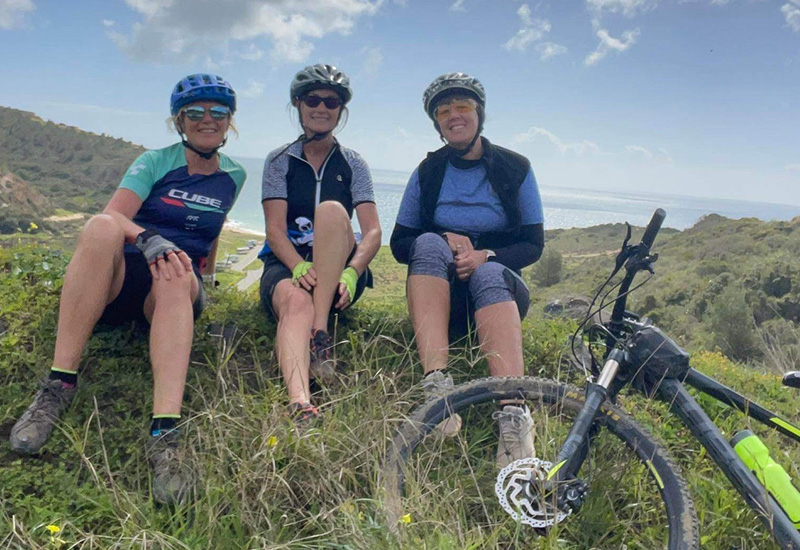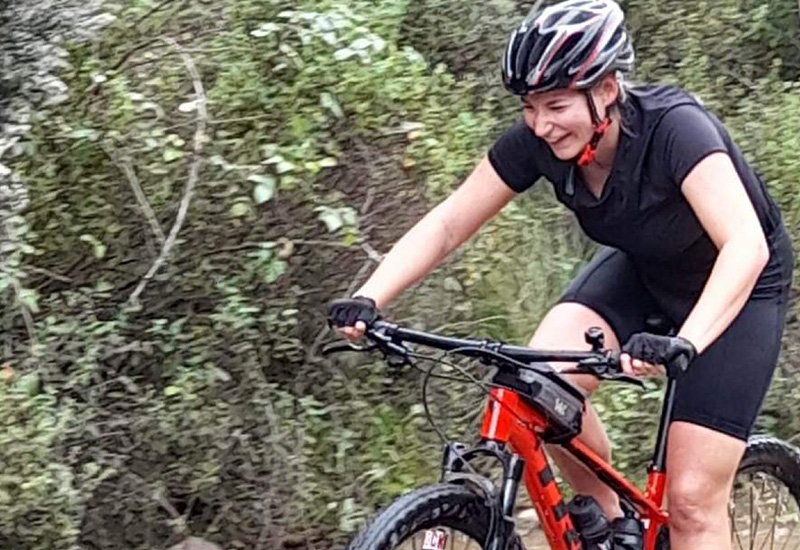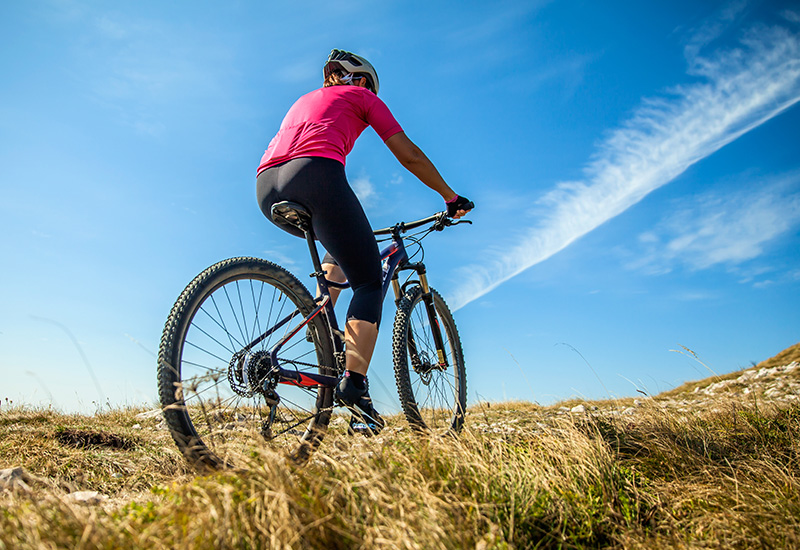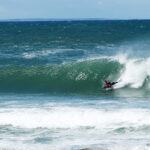Hi, Gilly here. I have recently had a conversation with a fellow biker about changing tyres for summer! Do you change yours?
I don’t change my tyres unless they are worn out or I have a blowout. This is partly because our conditions here don’t massively change across the seasons; more mud or more dust just adds variety to my rides. My reason for sticking with the same tyres is mainly because I have tried various types and I know what I prefer and what suits my style of riding. I now have fewer falls and more confidence off-road, so for those of you who haven’t considered the impact of different tyres or just want to check and change, this month, I thought I would chew the fat over the multitude of considerations and options.
First off, there are two basic tyre measurements – diameter and width. MTBs come in 3 different diameters, determined by the size of the wheels (rims) on your bike, usually 29”, 27.5” or 26”. Usually given in inches, however, there is an International Standard for labelling the size of tyres and rims, ETRTO, which uses metric – 622, 584 and 559mm, respectively.

When it comes to tyre width, most rims can handle a range, so it’s not absolutely necessary to replace your tyres like for like, if it suits and your bike has adequate clearance, you may be able to go wider. Tyre widths usually reflect the size when inflated (not including the tread) and with good eyes on a bright day, you can see these measurements on the wall of your tyres. This could be in imperial, metric or both, so a 50-622 will be a 2” wide tyre for a 29” wheel. Typically trail riders will opt for a narrower tyre than downhillers.
Points to note, there are three different types of wheel rim (most MTB will have Crochet) and two different valve types matched to the hole in the rim (most MTB will have Presta). Probably best to take your old tyre or, even better, your wheel, with you when you buy to make sure you get it right. If we are getting really techie, fork sizes and frame tolerances are also considerations for serious, extreme and competitive riding.
Size and fit sorted, your next consideration is tread depth and profile or knobble size and pattern, which is usually determined by the type of riding you do:
Sicks or low profiles have small, closely spaced knobbles with low resistance, great for smooth, hard and dry trails, but they offer less grip on loose dirt and under acceleration or braking.
The wider spaced and deeper the knobbles, the more traction and improved handling in muddy and rough conditions or for more aggressive riding, but they are slower on the climbs; add a pattern of tiny slits on the knobbles and you will have maximum grip over technical terrain like roots and rocks.

Semi-slicks strike a balance between acceleration traction and rolling resistance, with low-profile central tread for speed and deeper side or shoulder knobbles to give grip when leaning or cornering.
I’m guessing most of us will ride a mixture of roads and trails and won’t have different sets, so it’s best to pick a profile that works for the majority of conditions you ride and get comfortable with them.
Points to note here, most tread patterns are directional. If you mount them backwards, it will compromise performance, so look for the directional arrow on the tyre sidewall, and some treads are front or rear-wheel specific!
Finally, tubes or tubeless! Tubeless are tyres that seal directly on the rim and are inflated without the need for an innertube. I haven’t tried them as not all bike rims will take them (it will usually say on your rim). Along with a reduction in potential flats, you can run on lower tyre pressure, which can increase traction and comfort. If your MTB won’t take tubeless, you can buy Kevlar or tyres with a higher thread count per inch (TPI), which can be more expensive but offer greater protection from punctures. If you are going old school like me, don’t forget to carry a spare innertube and repair kit with you.
I feel we have only just scratched the surface, but if you haven’t inspected your tyres recently for wear and tear, or have noticed a dip in your riding performance, now might be a good time to check, change and potentially upgrade ready for summer, as the right type of tyre will impact your speed and performance – I hope this helps.
As always, have fun out on the trails, stay safe, and if you have inspiration for future musings, please get in touch.













